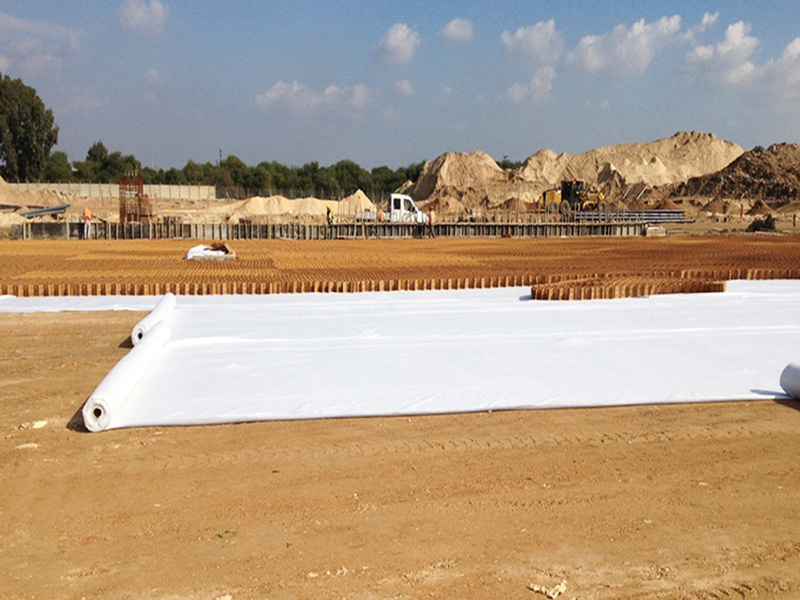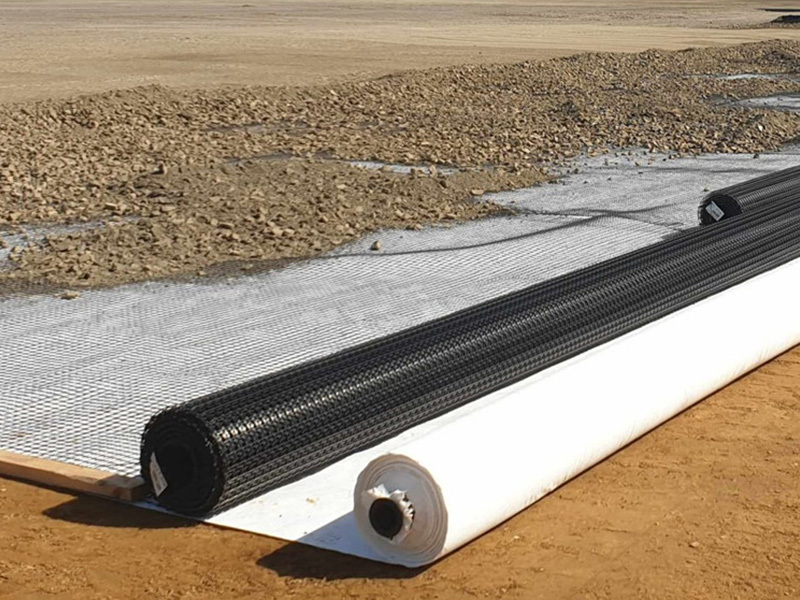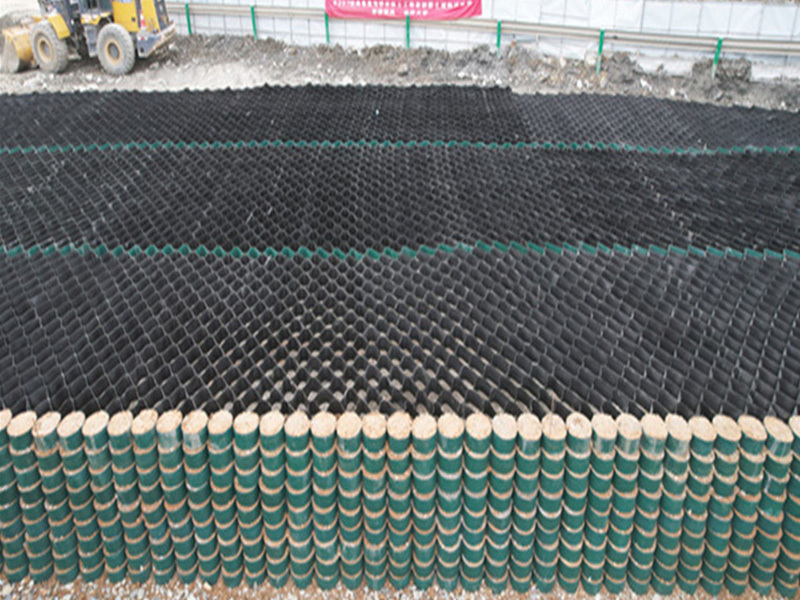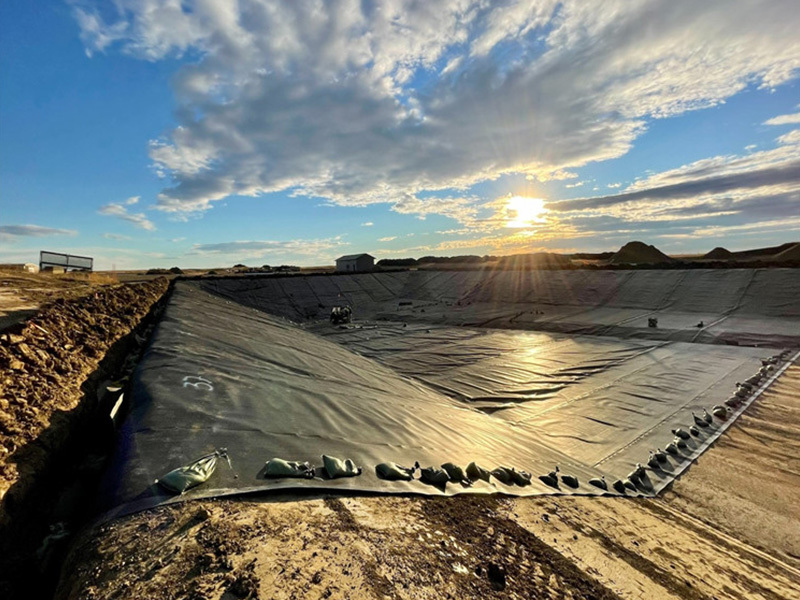Composite Membrane Engineering Construction: Techniques and Applications
Release time:
Aug 23,2023
1. Introduction
Composite membrane systems have become a critical solution in modern civil engineering, environmental protection, and water resource management. These engineered systems combine multiple layers of geosynthetics (such as geomembranes, geotextiles, and drainage nets) to provide superior performance in containment, reinforcement, and filtration applications. This article details the construction methodology, quality control measures, and key applications of composite membrane engineering projects.
2. Advantages of Composite Membrane Systems
Enhanced Performance: Combines the strengths of different materials (e.g., impermeability + tensile strength + drainage)
Cost Efficiency: Reduces the need for multiple separate layers
Durability: Resistant to punctures, UV degradation, and chemical exposure
Versatility: Adaptable to various engineering challenges (landfills, ponds, tunnels)
Environmental Protection: Effective containment of pollutants and leachate
3. Construction Process
3.1 Site Preparation
Topographic Survey: Detailed mapping of the construction area
Subgrade Preparation:
Removal of sharp objects and vegetation
Compaction to ≥90% of maximum dry density
Achieving proper slope gradients (typically 2-3%)
3.2 Material Selection & Handling
Common Composite Structures:
Geomembrane/Geotextile (GM/GT)
Geomembrane/Drainage Net (GM/DN)
Bentonite Geosynthetic Clay Liner (GCL)
Storage Requirements: Protected from UV exposure, stored on flat surfaces
3.3 Installation Procedures
Unrolling & Positioning:
Deploy materials with minimum 300mm side overlaps
Maintain 1.5% slack to accommodate thermal expansion
Seaming Techniques:
Thermal Fusion: For HDPE membranes (optimal temperature 280-320°C)
Chemical Bonding: For certain polymer combinations
Mechanical Fixing: Using batten strips for temporary positioning
Quality Assurance Testing:
Destructive Testing: Shear and peel tests on sample seams
Non-Destructive Testing: Air lance or vacuum box methods
Electrical Leak Detection: For critical containment applications
3.4 Protection Layer Installation
Geotextile Cushioning: Minimum 300g/m² nonwoven geotextile
Ballast Placement: Even distribution of protective cover materials
Anchoring Systems: Trenches, concrete deadmen, or soil anchors
4. Special Applications
4.1 Landfill Engineering
Base Liner Systems: 1.5mm HDPE + GCL + drainage composite
Cap Systems: Multilayer design with gas collection components
4.2 Water Containment
Reservoir Liners: UV-stabilized composite membranes
Aquaculture Ponds: Flexible membrane systems with protective layers
4.3 Transportation Infrastructure
Tunnel Waterproofing: Composite membranes with drainage boards
Bridge Deck Protection: Polymer-modified bituminous membranes
5. Quality Control Measures
Material Certification: Verification of manufacturer test reports
Field Testing Protocol:
Seam strength testing (every 150m)
Thickness verification (10% of rolls)
Construction Monitoring:
Daily inspection logs
Digital documentation with GPS mapping
6. Maintenance & Long-Term Performance
Inspection Schedule: Biannual visual inspections + annual performance testing
Repair Methods:
Patch installation for minor damages
Section replacement for major failures
Design Life: 30-50 years for properly installed systems
7. Conclusion
Composite membrane engineering represents a sophisticated integration of material science and construction technology. When executed with proper attention to design specifications and installation quality, these systems provide reliable, long-term performance in some of the most demanding engineering applications. The future development of smart membranes with embedded sensors promises to further revolutionize this field.
Key Terminology
Composite Membrane : Engineered multilayer geosynthetic system
Geomembrane : Impermeable polymeric sheet
Geotextile : Permeable fabric layer
Seam Integrity : Strength and continuity of joined sections
Leachate : Contaminated liquid requiring containment
Would you like any particular section expanded with more technical details or case study examples?
News
Geocell Technology for Slope Protection: Mechanisms and Applications
Geocell Technology for Slope Protection
HDPE Geomembrane Waterproofing Construction for Reservoirs
Waterproofing Construction for Reservoirs








